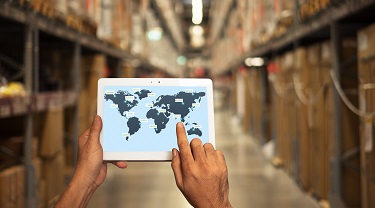Protect your intellectual property rights: Cover your assets
Ontario artist Jody Edwards was shopping at her local Winners store in St. Catharines in late 2016 when she was shocked to see a line of women’s shirts printed with her unique feather water colour paintings. She complained to the chain’s owner JX Canada, which immediately pulled the shirts from the shelves. Under Canadian copyright law, Edwards was a victim of intellectual property theft.
An investigation by CBC News later discovered that Edwards had no monetary legal recourse against the retail stores. Nor did she have much hope of suing the U.S.-based supplier, Vanilla Sugar. Despite hundreds, if not thousands, of dollars in sales for a shirt with her stolen artwork, Edwards couldn’t claim a dime.
In short, intellectual property can affect your bottom line. More often than not, intellectual property (IP)—your ideas—are among your most valuable assets.
Every trademark you build adds to the financial value of your business, much more than your tangible assets.
“Every trademark you build adds to the financial value of your business, much more than your tangible assets,” writes Kalyan Chakravarthy Kankanala, a well-known commentator on IP in India.
The business of ideas is big business these days. Software, services, data, written materials, artwork and trade processes all fall into the bucket of intellectual property. Anyone who’s made the decision to sell outside of Canada knows it takes a lot of guts to go global with your ideas and the rewards can be great.
In Canada, trademark, copyright and patent laws can help offset risk of bringing your ideas into the public realm. In Edwards’ case, it gave her the legal standing to force stores here to stop selling the shirts with her artwork on them.
But IP laws have limits, and they’re different in every country.
In the U.S., for example, Edwards could have sued—and potentially won against—every player in the supply chain for the theft of her art.
Of course, not all countries have the same level of protections in place for artists like Edwards.
Intellectual property theft is a global problem
Intellectual property theft is a big moneymaker. In 2013, counterfeit and pirating accounted for 2.5% of global imports, according to the latest data from The Organization for Economic Co-operation and Development (OECD). It’s a business worth nearly half a trillion dollars U.S. annually.
You should also check out
Protecting your intellectual property is of crucial importance when executing an international expansion plan. Our legal experts give you the inside scoop.
A 2016 report from the OECD, entitled Trade in Counterfeit and Pirated Goods: Mapping the Economic Impact, notes counterfeit goods cut across industries. Here are some of the most common fakes in the marketplace:
- Luxury items like clothing and watches
- Via intermediary products in the supply chain, such as machines, spare parts and chemicals
- Consumer goods, such as pharmaceuticals, food, medical equipment and toys
In the latter case, IP theft can have broad-reaching repercussions on consumer health and safety, note the report’s authors.
Most fake goods originate in middle income and emerging economies.
China accounted for 63.2% of counterfeit products in 2013. Hong Kong produced 21.3% of global counterfeits. Turkey was a distant third at 3.3%.
The OECD report doesn’t encompass digital piracy and data theft, which is a growing concern.
When doing business outside of Canada—either selling internationally, or sourcing people and parts from another country—understanding the nuances can help you shield your business and your clients from the effects of IP theft.
Laws and regulations around IP can influence consumer protections and taxation rules. IP laws can also affect other trade regulations, depending on what you’re selling and where.
Exporters have to be very cognizant about exporting to markets with lax IP enforcement regimes.
“Exporters have to be very cognizant about exporting to markets with lax IP enforcement regimes,” says anti-counterfeit lawyer and Kestenberg Siegal Lipkus LLP partner Georgina Starkman Danzig. “Exporting to certain markets may increase your sales, but it could also increase the chance your product will be knocked-off. Understanding the IP landscape in those foreign markets, permits a meaningful risk-to-reward analysis, which is key to success.”
Copyright: What you need to know when selling outside of Canada
Copyright grants certain legal rights to original works. As the word suggests, these rights include the right to copy a work, in whole or in substantial part, as well as do other things with it, including making it available on the internet, or authorizing others to do the same. Copyright applies to artistic, literary, musical and dramatic works—anything from a movie to a book to a poster to a graphic on a T-shirt. While most countries agree to certain international standards, copyright laws vary from country to country, so exporters need to be aware of laws in their own country, and international laws.
When it comes to copyright, there are generally two types of infringement, says Catherine Lovrics, partner with Bereskin & Parr LLP.
Primary infringement occurs when someone makes a copy of a work, or copies a substantial part of it, without the copyright owner’s permission or exercises other exclusive rights of the owner.
Secondary infringement refers to the sale, distribution, import or export of a work you know (or should have known) would infringe on someone’s copyright. The law was only recently changed to include exporting as a form of infringement.
“In Canada, it used to be that exporters would be liable if they made an infringing copy in Canada, or authorized it being made,” says Lovrics. “If the exporter purchased the infringing copy but wasn’t involved in making it, that exporter may not have been liable in Canada.”
“The law was recently updated to add a form of infringement for exporting goods that an exporter should know were made without the consent of the copyright owner in the country where they were made.”
For example, if you export a T-shirt with a graphic without the permission of the person who owns the graphic’s copyright in Canada, you could be liable for copyright infringement.
Canada has agreed to certain international standards for copyright, which may exceed domestic laws. On books for example, generally speaking, Canada grants copyright to the author for their lifetime and adds 50 years of protection after their death. After that, the material is in the public domain. In the U.S., the rule extends to 70 years after death.
Copyright ownership can be divided internationally, with some copyright owners in Canada and others in the country where you’re selling.
Are you selling internationally? Here are 5 copyright questions to ask:
- Who owns copyright in the country where the goods were made, and have you cleared rights with that person?
- Who owns the exclusive rights in the country where you’re selling?
- Are the goods you’re selling authorized in both markets?
- Does your supplier agreement include a “representation and warranty” from the supplier that the goods are not infringing on copyright in Canada or abroad?
- Is that representation and warranty backed by an indemnity?
Knowing the importance of intellectual property rights before entering a new market is good risk management practice
While your ideas could be at risk, you also don’t want to step on anyone else’s toes. What if you sell your Canadian trademarked goods to a country where another company has superior trademark rights? You could be exposed to infringement action based on the laws of that country.
What if I only do business in Canada?
Do you bring in parts or products from other countries? If you rely on manufacturers outside of Canada, your need of intellectual property rights may inadvertently affect you as well.
“If you’re manufacturing offshore, you also have to be conscious about where you’re manufacturing,” says Starkman Danzig. “Many businesses rely on reputable audit companies to ensure their foreign suppliers are honest and contractually compliant.”
Starkman Danzig says getting a feel for how a foreign manufacturer operates can give you some insight into the legitimacy of a company, but even that doesn’t offer the complete picture.
“Place-based compliance with applicable foreign legislation—such as child labour laws, workplace safety regulations, and the Foreign Corrupt Practices Act—may only meet the minimum threshold,” she says. But [it] may not be enough to ensure compliance with corporate mission statements and corporate codes of conduct.”
How do you spot a fake? Starkman Danzig offers a few common ways to suss out a counterfeiter.
“They don’t invest in research and development; they don’t ensure compliance with safety standards and labour laws; and they don’t care about your business, your customers, the integrity of your brand or the health, safety and well-being of you, your kids and your community,” she says.
Counterfeiters are adept at selling to countries with porous entry, transhipment and export IP border-enforcement regimes, adds Starkman Danzig. They choose transit routes that get their goods to market with the least risk of border intervention.
Are you relying on distributors in other countries? Sometimes there are little things that can tip you off. Let’s say a regular customer overseas who always ordered 200 widgets monthly from you has slowed orders to 100 widgets per month, with no reasonable commercial explanation for the change. It may be that the customer is filling in the gaps with fake products.
You should also check out
Learn the basics of intellectual property and how to develop a strategy to protect it when selling internationally.
“It could be an indication that they’re getting sourced and supplied in other ways,” Starkman Danzig says. “Keep an eye on the numbers and make sure they add up. Many businesses rely on reputable audit companies to ensure their foreign suppliers are honest and contractually compliant.”
In low-cost manufacturing jurisdictions, even your own employees could be making selling your product on a counterfeit basis out the back door, says Michael Geist, a University of Ottawa law professor and the Canadian Research Chair in Internet and e-Commerce Law.
You may decide the reduced costs of using lower-wage manufacturing outweighs that risk but you need to understand the risk exists.
When assessing the risk of IP theft, where you’re selling, what you’re selling and the type of intellectual property you need to protect all come into play, says Geist.
“If you’re selling a product that has a component with software embedded in it, and another jurisdiction has tried to take that same IP and market it as their own, and did so on a global basis, that will be a source for concern because, in a sense, you’re competing with yourself,” says Geist.
Intellectual property laws aren’t just for software engineers, however.
The Canadian Vintners Association (CVA) owns the Canadian Icewine trademark and works hard to deter counterfeit Icewine in global markets.
Food counterfeiting is a problem. Starkman Danzig has dealt with counterfeit rice and ginseng. “I wouldn’t want anyone I know to eat something that is counterfeit,” she said.
Weighing the economic importance of intellectual property rights against international business opportunities
Although having the right patents and trademarks in place is best practice, it doesn’t always remove the risk of intellectual property theft and it doesn’t guarantee your success abroad, says Geist.
There may be value to having a patent, but there isn’t a direct correlation between having IP rights and succeeding in the marketplace.
“There may be value to having a patent, but there isn’t a direct correlation between having IP rights and succeeding in the marketplace,” says Geist.
He says intellectual property protection is part of overall business risk assessment. But it doesn’t always make sense for business to have IP protections at the top of the list when looking to grow sales internationally. Other considerations often take precedent and for good reason.
“You often times want to be first to market, with good marketing and an effective sales channel. You’ve got to do a lot of things to be successful in a marketplace,” says Geist.
He adds that protecting your intellectual property doesn’t always make good business sense. “Waving a patent might not mean much and even if you do reach the point where there’s a violation of your IP right, the cost of enforcing it may outweigh the loss you’re experiencing. In some cases, all you’re really in a position to do is send an angry lawyer letter.”
Data theft is among top IP considerations in 2018 because it’s so valuable. Netflix, for example, dominates the marketplace in part because it controls data it’s collected from 100 million worldwide subscribers. But IP goes beyond digital considerations.
Did you know that retail services are protected under trademark law in Canada?
If you run a store that sells staplers under the registered trademark “Simple” a registered retail services selling staplers, and someone else comes along and opens an office equipment store called “Simple,” there could be grounds for an infringement action if there is a reasonable likelihood of confusion, Starkman Danzig says.
Outside of Canada, the reality is trademarks may not hold as much weight. In 2015, there were more than 30 Apple stores in Shenzhen, China. At the time, Apple had just one official store in the city and five authorized dealers.
“Services are protectable [but] can be knocked off in the same way as goods can be knocked off,” Starkman Danzig says.





